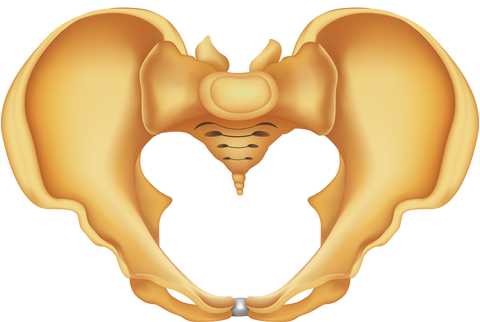In women with pelvic pain, is a pudendal nerve block effective, and how does the effectiveness correlate with findings of the history and clinical exam? These were the questions posed by a study published in 2012. Sixty-six patients were given a standardized pudendal nerve block, with Visual Analog Scores (VAS) and presence of numbness recorded prior to and up to 64 hours after the block. Inclusion criteria for the study involved having spontaneous or provoked pain in the distribution of the pudendal nerve, and patients were excluded if significant psychosocial issues, neurogenic or neuromuscular disorders, contraindication to sedation or allergy to utilized medication was present. A detailed history and physical examination was completed.
The pudendal nerve block was administered transvaginally and digitally, under sedation, in a lithotomy position. Following data collection, the researchers found that the presence of a positive Tinel's sign (palpation medial to the ischial spine for assessment of pain reproduction), a prior history of vulvovaginal candidiasis, or symptom worsening in the sitting position was associated with a return of the pain prior to the numbness wearing off. 92.4% of the subjects reported a "positive" response to the block, with varied lengths of time of symptom reduction. Nearly 87% of the subjects reported a reduction in one or more symptoms. This study only studied subjects for 64 hours, therefore it is not possible to discuss from this research the long-term implications of a pudendal nerve block in women with pudendal neuralgia. The authors did find a correlation between prior traumatic events including birth injuries, herniated discs, and fractures of the coccyx, pelvis or sacrum.
What does this research tell us about the role of pudendal blocks in the assessment and treatment of female pelvic pain? As already mentioned, the brevity of the data collection (only up to 64 hours) in addition to application of a non-guided block limit the ability to extrapolate this information to any long-term results. However, the correlations to clinical history and the return to pain prior to numbness ending may provide useful information as further clinical research is completed. The numbness was found to have inconsistent effects on a patient's symptoms such as bladder, bowel, sexual dysfunction, or sitting, and further research could measure the effects of a block on these functions. If you would like to discuss pudendal blocks with experts on pudendal dysfunction, sign up for the remaining spots in our August San Diego course!
Learn more about the Pudendal Neuralgia Assessment and Treatment course that we are holding at Comprehensive Therapy Services later this year.
This post was written by H&W instructor Dawn Sandalcidi, PT, RCMT, BCB-PMD. Dawn's course that she wrote on "Pediatric Incontinence" will be presented in in South Caroline this August.

I will never forget the morning I was called by one of my referring pediatricians to tell me an 11-year-old boy with fecal incontinence hung himself because his siblings ridiculed him. If you ever ask me why I do what I do, I will tell you so that nothing like that would ever happen again.
When we think of pediatric bowel and bladder issues we primarily focus on the physiologic issue itself and treating the underlying pathology. I think it is imperative to teach a child that she/he did not have a leak but their bladder or bowel had a leak. It makes the incident a physiological problem and not a problem of the child.
It is not always apparent how much the child is suffering from issues with self-esteem, embarrassment, internalizing behaviors, externalizing behaviors or oppositional defiant disorders. Dr. Hinman recognized theses issues years ago (1986) and commented that voiding dysfunctions might cause psychological disturbances rather than the reverse being true. Dr. Rushton in 1995 wrote that although a high number of children with enuresis are maladjusted and exhibit measurable behavioral symptoms, only a small percentage have significant underlying psychopathology. In more recent studies by Sureshkumar, 2009; Joinson 2007 it was noted that elevated psychological test scores returned to normal after the urologic problem was cured. Lettgen et al. 2002, Kuhn et al, 2008, van Gontard, 2012 all reported that children with urge incontinence are distressed by their symptoms but the family functioning is intact.
I frequently get testimonials from my patients. I would say the common denominator is the child and/or parental report that the child is “much better adjusted,” “happier”, “come out of his shell”, “more outgoing”, “making friends.” As a side note -- they’re happy they don’t leak anymore.
The International Children’s Continence Society (i-c-c-s.org) is filled with standardization documents that support the work we do to take care of kids with elimination issues. The work we do to take care of these kiddos in not only necessary but also mandatory to avoid these psychological disorders.
To learn more about Dawn's course visit Pediatric Incontinence
Read more about what Dawn does in PT in Motion
A systematic review from July of 2013 addressed how interpersonal factors modulate pain. Four primary findings of the research that are found to affect pain-related responses are as follows: the degree to which social partners were active (or perceived to be able to be active), the degree to which participants could perceive the specific intentions of the social partners, the pre-existing relationship between the subject and the social partner, and individual differences in relating to others (including coping styles).
Some patients are negatively impacted by a partner who is attentive to pain, with increased reports of pain, worse pain outcomes when together versus alone, and with longer lasting pain states. On the other hand, some patients respond favorably to a partner's support, with lower reports of pain states when offered support such as holding the hand of a partner. Because each person's relationship and response to the pain within the context of the relationship varies, the impact of a partner on perceived pain is also varied. The authors, after describing details and evidence of pain modulation research, conclude the following: "Specifically, interpersonal exchanges affect precision or salience by socially signaling the safety or threat of the impending stimulus itself or the environment in which the stimulus occurs."
How can we take this information to heart within the pelvic rehabilitation practice? One of the ways that we offer support to a couple is by inviting a partner to attend a clinic session where he or she can learn to assist in application of soft tissue release techniques. The partner has the opportunity to be validated in both the gratitude that the therapist offers to the patient and partner for attending, and also in the fact that pelvic pain is commonly encountered. Because pelvic pain can interfere with a couple's intimacy, having such validation about the physicality of pain, when present, may be useful in a relationship. When a partner learns how to be of help in the healing process, this may also affect the factors mentioned in the cited research article, specifically, how partners are perceived to be able to be active or perception of specific intention.
It has been my clinical experience that partners are very specific in intention once being trained in how to help with pelvic pain, and that intention is to be a part of the healing process. It has also been an observation that if a partnership is struggling with their relationship, that issues can surface once asked to engage in pelvic muscle rehabilitation. This might mean that a patient chooses to pause rehabilitation and enter psychological counseling or other healing work. It also might mean that the patient chooses to not request help of the partner in the clinic or at home for the time being.
In relation to the pre-existing interpersonal factors, we do not necessarily know the extent to which the patient, partner, or the relationship has the ability to cope with challenges, or what type of relationship is in place. For that reason, we must remain nonjudgmental, and recognize that as rehabilitation professionals, we are limited by the scope of our practice and may serve the patient best by coordinating a referral to a counselor or psychologist. If you are interested in learning more about the research as well as the practical clinical implications of pain neurobiology, we still have a few seats left in our continuing education course titled Meditation and Pain Neuroscience. This course takes place in September in Illinois, and features an accomplished physical therapist as well as a psychiatrist. This course will offer an amazing learning experience as it combines the perspectives of medicine and rehabilitation, we hope you can join us!
This post was written by H&W instructor Ginger Garner, MPT, ATC, PYT. Ginger will be instructing the course that she wrote on "Yoga as Medicine for Labor and Delivery and Postpartum" in Washington this August.

Physical therapists often see women during pregnancy and postpartum, but what can physical therapists do to foster better birth outcomes?
A 2012 study conducted in Norway underscores the importance of childbirth education, which can take place as part of patient education and counseling in physical therapy. The study looked at 2206 women with intended vaginal delivery in order to assess the association between fear of childbirth and duration of labor. Labor duration was found to be significantly longer in women with fear of childbirth, with the rate of epidural analgesia, induction, and instrumental vaginal delivery also being higher in fearful women. The authors posit that “anxiety and fear may increase plasma concentrations of catecholamines, and high concentrations of catecholamines have been associated with both enervated uterine contractility and a prolonged second stage of labour.” (Adams et al 2012).
Yoga is a mind-body intervention that is supported to lower pain perception, anxiety, reported stress, and discomfort, all variables that can improve overall birth outcomes and reduce fear of childbirth. Integrative physical therapy practice uses a biopsychosocial model, one that uses energetic, emotional, physical, intellectual, and spiritual support methods to prepare a mother for her labor, delivery, and beyond. Mason et al (2013), in a study that compared standard diaphragmatic breathing to yogic breathing, found yogic breathing to be superior in all measured areas, including increasing/affecting: 1) cardiac-vagal baroreflex sensitivity, 2) oxygen saturation, 3) oxygen absorption, 4) tidal volume, 5) vagal stimulation, 6) parasympathetic activation, and 7) overall reported physical and mental health.
Yoga can address more than just flexibility or relaxation for laboring moms. It fosters calm awareness, mind-body concentration and focus, develops postural control and lumbopelvic health, including neural and myofascial health and motor patterning, all of which, combined with conventional physical therapy practice, can be more efficacious than exercise prescription or childbirth education alone. Ginger’s course, Yoga as Medicine for Labor, Delivery, and Postpartum addresses the systems-based changes of the pregnant patient, and prepares the physical therapist to meet the needs of the laboring or new mom with a mind-body holistic perspective.
To learn more about Ginger’s course, visit Yoga as Medicine for Labor, Delivery, and Postpartum

When assessing sacroiliac joint (SIJ) stability and function, pelvic rehabilitation providers often use the single leg stand test. During transition from double-leg stance to single-leg stance, dynamic stability is required and there are several ways to describe the observed behaviors in patients. If a patient, for example, loses her balance when transitioning to a single leg stand, what is contributing to her loss of stability? Could it be the SIJ, abdominal and trunk strength, ankle proprioception, visual or vestibular deficits, or hip abductor weakness? Of course, these are not the only potential confounders to postural stability, yet represent some of the considerations of the rehabilitation therapist.
A recent study aimed to further define techniques to measure "time to stabilization" in a double-limb to single-limb stance. The authors measured 15 healthy control subjects and 15 subjects who presented with chronic ankle instability (CAI) and the researchers tested the ability to achieve stability in single-leg stance during eyes open and eyes closed tasks as well as with varied speeds of movement.
The research found that in subjects who had CAI, following transition to single-leg stance, increased postural sway was noted. In the same subjects, when performing the task with eyes closed, those with a history of ankle instability performed the transition much more slowly than those in the control group when allowed to choose their speed of transition. Prior research (described in the linked article) had postulated that time to stabilization (TTS) following double-limb to single-limb transition was an important variable to measure, yet this research did not find that the TTS was significantly different between the groups studied.
This research highlights the value of considering the total limb and trunk stability during testing of functional tasks, as well as considering visual assist versus eyes closed variables for task completion. The speed of task performance should also vary so that deficits can be perceived by the examiner. The authors of this research propose further specifications to future research that will add to the meaningfulness and accuracy of the described testing methods. They also conclude that in patients with chronic ankle instability, an altered and poorer strategy is used in the overcoming of a postural perturbation. If you would like to further explore the sacroiliac joint examination, evaluation and treatment, and discuss concepts of stability, join Institute faculty member Peter Philip at the continuing education course Sacroiliac Joint Treatment this July in Baltimore!
Fascia is finally getting proper respect, rather than being that "white stuff" that was cut away during anatomy labs. Researchers continue to explore the cellular mechanisms and the total body functions that require healthy fascial layers. Fascial planes and connections are increasingly considered in strengthening programs as well, rather than only being considered in the design of stretching or flexibility programs. Tom Myers author of Anatomy Trains, and student of Rolfing founder Ida Rolf, contributes not only to the anatomical knowledge of therapists, but also to the functional applications of fascia in daily life and in exercise regimens.
Within the world of exercise training and physical fitness, muscles have often been considered in isolation, as is pointed out in this article written by Tom Myers in IDEA Fitness Journal. Yet muscles rarely work functionally as an isolated structure. Consider this fact when teaching pelvic floor muscle training. How many times have you instructed a patient to utilize thigh adductor muscles, exhale (respiratory diaphragm), or activate transversus abdominis to augment or facilitate the pelvic floor? While there is value in requesting that a patient focus on or emphasize a pelvic muscle contraction, or in teaching a patient to quiet dominant abdominals or gluteals, rarely do we find it effective to teach total isolation of a muscle in functional re-training.
Mr. Meyers uses anatomical information to drive the emphasis on fascial training, pointing out that there are ten times more sensory nerve endings in fascia than in muscles, and describes fascia as requiring our knowledge of accurate anatomy to engage the fascial planes as an "organ system of stability." Myers makes the case that fascia responds better to variation than to a repeated program when aiming to build fascial resilience. Varied tempo, varied loads, and varied movements are key to improving fascial health and efficiency. Integration of kinesthetic awareness via the fascial tissues rather than the muscles is also an important concept that is discussed- bringing awareness to movement through skin and superficial tissue movement rather than directing attention only to joint motion is another concept proposed for advancing movement training programs.
Considering these concepts may or may not change how you are currently designing your patients' fitness and rehabilitation programs, depending upon how you were trained and upon how you have continued to access continuing education and research. Breaking old habits and re-learning how to train movement does take effort on the part of the rehabilitation therapist, and fortunately, many instructors are integrating concepts of fascial planes into coursework. One such course that focuses clearly on integrating fascial training into sports-specific rehabilitation is Biomechanical Assessment of the Hip and Pelvis taking place this August in Arlington, Virginia. Instructor Steve Dischiavi, physical therapist and athletic trainer to the Florida Panthers, offers an excellent course that includes exercise concepts specific to the idea of fascial "slings" and that is sure to add some new exercises to your tool bag.

A recent literature review addressing the effectiveness of yoga for depression reports that the positive findings are promising. The 2007 National Health Interview Survey (NHIS) found that yoga was one of the top 10 complementary health approaches used among adults in the United States. (The linked page for the NHIS also includes a video of the scientific results of yoga for health.)
Yoga is not only about bodies bending- ancient yoga traditions offer physical, mental, and spiritual techniques that are designed to be holistic in nature. Many instructors in the US focus on the many physical benefits of yoga, yet there are many types of yoga, many instructors with varied levels of training, and many health issues that require an individualized program of yoga therapy. In relation to the potential effects of yoga on depressive symptoms, theories in neurobiology point to the potential positive effects on the HPA (hypothalamic-pituitary-adrenal) axis, according to the linked article by Lila Louie.
While none of the articles described in the literature review are specific to the one patient group or population, the subjects studied include incarcerated women, older patients, university students, and patients from the general population who struggle with depression. One group of patients known to be at risk for severe depression is postpartum women. The definition of postpartum varies, and a generous definition may include any issue that, once imparted in a postpartum period and left unaddressed, could persist throughout a woman's lifetime. This is commonly seen in the clinic as uncorrected postural dysfunction, pelvic floor dysfunction, or gait changes, for example.
Because both yoga and exercise "appear to ameliorate depression," the author of the literature review states that motivation and compliance towards either modality should be considered during treatment planning for patients. Louie further states that yoga practice of asanas is safe, cost-effective, versatile, and can be used on its own or as an adjunct to medication. If you would like to learn more about the use of yoga for the postpartum population, sign up for Ginger Garner's continuing education course: Yoga as Medicine for Labor and Delivery and Postpartum offered in Seattle in August. To read about Ginger's Yoga as Medicine for Pregnancy course, click here.

While information about "core" strengthening and pelvic dysfunction can be found in the athletic literature, often there remains a disconnect between the level of depth of knowledge among many of the coaches, trainers, and athletes when related to issues of urinary continence. The prevalence of urinary and fecal incontinence related to impact sports has been established, and it has been determined that having children is not a necessary precursor to developing symptoms of leakage. It has been my experience that the term "athlete" can mean different things to different professionals. For example, Institute founder Holly Herman has always been adamant about mothers as "athletes" regardless of the level of sport involved; the simple act of lifting strollers, car seats, children, grocery bags, and kneeling, squatting, lunging involved requires a significant level of athletic ability. With this in mind, knowing the actual requirements of the typical daily activities of any patient is critical to providing a meaningful rehabilitation approach.
So how is the pelvic floor related to athletics? Faculty member Michelle Lyons addresses this question in her new course (offered for the first time in the US this August in Ohio) titled The Athlete and the Pelvic Floor. The course is designed to "bridge the gap between pelvic floor therapists and sports medicine practitioners." Gender and sport specific issues will be covered, and participants will have the opportunity to combine concepts from respiratory, pelvic, and orthopedic perspectives.
With regards to urinary incontinence in female athletes, pelvic floor rehabilitation has been demonstrated to be an effective approach. In a study by Rivalta et al., three nulliparous women described urinary leakage during sport (volleyball) and daily life. Intervention included functional electrical stimulation with internal sensor completed 20 minutes 1x/week using a 50 Hz frequency, biofeedback 1x/week for 15 minutes, pelvic floor muscle exercises, and pelvic floor muscle exercises with a vaginal cone, all for three months. The vaginal cones were weighted, of three different weights, and used for up to 10 minutes at a time. Treatment adherence was recorded by a physician at a weekly visit. The pelvic floor muscle strengthening protocol used the "Kegel" protocol from 1952- at least 300 pelvic floor muscle contractions/day divided into six sessions, avoiding coactivation synergies. The chosen protocol is interesting to note as most therapists trained in pelvic rehabilitation would choose a functional approach to exercising, with less emphasis on avoiding co-contractions as long as the patient performs pelvic muscle contractions appropriately. The combination of biofeedback, and electrical stimulation, and cones is also not typical, yet is evidence that pelvic muscle strengthening in a relatively short period of time can ease symptoms of leakage with functional activities.
The good news is that all women at a four month follow-up were able to report involvement in sport and daily life without urinary leakage. All three women were also able to discontinue use of a panti-liner used to prevent leakage into clothing. Join Michelle Lyons as she covers a wide range of pelvic dysfunctions in athletes and how the best evidence combines with clinical practice pearls to get your patients back to function.
Pudendal nerve dysfunction, when severe, is truly one of the most difficult conditions treated by pelvic rehabilitation providers. While peripheral nerve dysfunction anywhere in the body can be challenging to treat, access to the nerve along its many potential sites of irritation is limited when compared to other peripheral nerves. Many research studies have been completed that investigate how structures like the median nerve move in the body, and to what extent the nerve movement changes in cases of dysfunction, yet we still have very little to work with regarding the pudendal nerve. Little, that is, except anatomical knowledge, nerve and tissue mapping and palpation skills, expert listening and evaluation skills, and an abundance of existing and emerging methodology directed to treatment of chronic pain conditions.
The Neuro Orthopaedic Institute (also known as the NOI group)has led the physiotherapy world in seeking and sharing knowledge about the evaluation and treatment of conditions involving the nervous system. In a prior posting within the "noinotes" available as a newsletter from the NOI group, the following is stated: "…for the best clinical exposure of a peripheral nerve problem, take up the part that you think holds the problem first and then progressively add tension to the nerve via the limbs." Let's say, for example, that you gently tension the pudendal nerve by completing an inferior compression of the right levator ani muscle group (towards the lateral portion of the muscle belly versus at the midline). At this point, what limb movement should be performed to increase tension to the nerve? Does a straight leg raise tension the nerve, or hip rotation, hip adduction? What evidence do we have that this nerve tension increases in terms of elongation of the peripheral nerve, and by what connective tissue attachments is this tension proposed to occur? And for using order of movement in the clinic, do we start with a pelvic muscle bearing down or contraction, then add trunk or limb movements?
The "Ordering nerves" post describes listening "…to the patient about the sequence of movements which aggravate them.." so that with clinical reasoning, for evaluation or treatment, the nerve symptoms can be reproduced to an appropriate extent. For example, if a pelvic muscle contraction significantly aggravates a patient's nerve-like symptoms, why should a patient be instructed, or allowed even, to do Kegel muscle exercises to a degree that causes significant pain? If a patient has low grade, annoying symptoms that are only reproduced with posterior pelvic floor stretch combined with an anterior pelvic tilt and passive straight leg raise with internal rotation of the hip, then that position should be incorporated into a clinical and a home program if able.
Just because we don't yet know how patients with true pudendal nerve dysfunction present clinically in terms of nerve gliding ability, and what movements typically engage particular portions of the nerve (such as the proximal portion in the posterior pelvis, the portion that lives along the obturator internus, the portion housed by the Alcock's canal, or even the longest portion of the nerve that extends to the genitals), that does not mean we should default to a one-size-fits-all pelvic muscle strengthening or stretching approach. Each patient must be met with curiosity, and with keen knowledge of anatomy, nerve evaluation principles, and pain-brain centered skills so that an individual approach is designed. As is concluded in this post from the NOI group, we must "Keep playing with order of movement."
If you would love to fill up your toolbox with concepts and techniques for treating pudendal nerve dysfunction, sign up quickly for the last chance this year to take Pudendal Neuralgia and Treatment in San Diego this August.
The goals of a recent research article were to determine the degree to which lower urinary tract symptoms (LUTS) are related to quality of life (QOL) and also the reliability of parents to accurately report on QOL disturbance in children who have urinary incontinence (UI). Outcomes tools utilized in the study include the Dysfunctional Voiding Symptom Score (DVSS) and the Pediatric Urinary Incontinence QOL tool (PIN-Q). Parents of forty children ages 5-11 (10 males and 30 females) and diagnosed with non-neurogenic daytime wetting completed the outcomes tools and responded to open-ended questions about incontinence and QOL. All children had daytime wetting, more than 50% of them had recurrent urinary tract infections (UTI's), and 89% reported urinary urgency.
According to the National Institute of Diabetes and Digestive and Kidney Disease (NIDDK), night-time wetting affects 30% of children who are 4 years of age, with the condition resolving in about 15% of children each year. Additionally, wetting at night persists in about 10% of 7 year-old, 3% of 12 year-olds, and 1% of 18 year-olds. A summary handout about Urinary Incontinence in Children is available here.
The study found that parents were reliable in reporting quality of life and symptoms in their children, as the outcomes scores completed were not different between them. (I would point out that nearly all parents involved were the patient's mothers; and it may be interesting to know more information about how the responsibility of managing urinary incontinence in children is shared among parents or caregivers.) Confirmed in the research was the knowledge that urinary dysfunction in children causes significant quality of life impact.
The subjective complaints of how some of the children avoid activities such as sleepovers, or worry that classmates can see or smell leakage is heartbreaking. The parents' complaints of feeling frustrated and angry about the issue is also understandable as there is a variable amount of support and understanding that each family has about how to manage the incontinence. A child's teacher or friends will also display a wide variety of supporting or sabotaging reactions that can add dramatic increases in stress. The authors point out that there is a significant "…need to improve teacher education and make attempts to engage the educational system to help these children."
If you would like to learn how to be a part of the solution, you can attend the Pediatric Incontinence and Pelvic Floor Dysfunction continuing education course taking place in August in South Carolina. It's the last chance to take the course this year!
By accepting you will be accessing a service provided by a third-party external to https://www.hermanwallace.com/










































